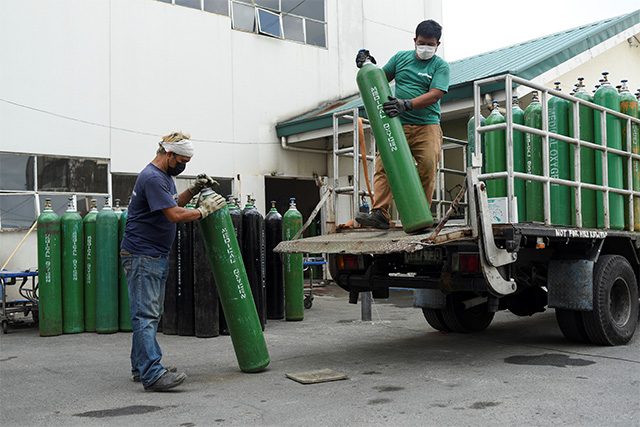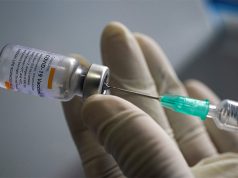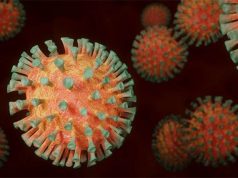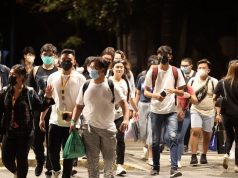
Some Filipinos took the bayanihan route and collated information on COVID-19 medical supplies amid the skyrocketing COVID-19 cases in the country.
A Twitter user with the handle @ChocnutSpread released on September 4 a list of oxygen suppliers in the National Capital Region and in Cavite via Google Sheets.
“Okay guys, gumawa ako ng Google Sheet na listahan ng mga Oxygen suppliers sa NCR at Cavite. Kung meron kayong alam na mga supplier din, comment lang then encode ko,” the user wrote.
“Tulungan tayo sa panahon na ito okay?” the user added.
The user, whose real name is Irene Medalla, is not affiliated with the Choc Nut brand, chocolate-peanut candy bar in the Philippines, or any of its varieties.
Okay guys, gumawa ako ng Google Sheet na listahan ng mga Oxygen suppliers sa NCR at Cavite. Kung meron kayong alam na mga supplier din, comment lang then encode ko. 🙂https://t.co/tzDU73wZCv
Tulungan tayo sa panahon na ito okay?#chocnutspreadCares #covid19ph
— ChocNut® Spread (@ChocnutSpread) September 4, 2021
Medalla regularly updates the Twitter thread and adds suppliers she would find and contact on Facebook and Google.
She also consolidated suppliers suggested by other Filipino online users. They placed their input as comments under the long thread.
So far, the Google Sheets titled “Important things you may need to know #COVID19PH: Brought to you by the Filipino people” has an organized content directory with the following links:
- List of hospitals
- Home care providers
- Home services (X-ray and Labs)
- Free telemedicine
- List of doctors
- Vaccination sites
- Oxygen suppliers and concentrators
- Importers and distributors of Remdisivir, Baricitinib and Tocilizumab, COVID-19 treatment drugs
- Drug stores
- Food delivery services
- COVID-19 tips for self-quarantine
Medalla said that some information such as the hospital status and the COVID-19 vaccination sites are limited and not updated.
She later said that the number of people looking for COVID-19 related medical supplies drove her to make this list.
“Sa mga nagtanong bakit ako gumawa nito. I need to do something kahit itong consolidated list na ito. Sobrang dami kong nababasa sa FB, Twitter at IG na need ng mga information na ito. Kailangan nating lumaban. Lalaban ha!” Medalla wrote.
The concerned citizen also urged others to share her link to save more lives.
“Trending ang c/ondolences. Hindi pwede to, lalaban tayo, share the link! It might save lives!!! LALABAN TAYO!” Medalla said.
Another user @eliseinwndrlnd shared a screenshot showing a list of contact information where to secure approved COVID-19 treatment drugs, oxygen supplies and oximeters.
i hope you wont need this but just in case pic.twitter.com/vgmKq7HoA9
— elise (@eliseinwndrlnd) September 1, 2021
Last Monday, the World Health Organization Philippines on released a comprehensive guide for home care treatment of COVID-19 patients.
It includes assessing if the case is severe or mild COVID-19, as well as the devices needed to monitor the patient’s health and other minimum health preventive measures for other members of the household.
“Around 80% of people who become infected with COVID-19 only develop mild symptoms and recover without any special medical treatment. Not all people need to be hospitalized. Self-isolating, either at home or in a facility, is recommended for young people with no comorbidities or have mild symptoms,” read the post.
Last April, some medical doctors and concerned Filipinos have also released guidelines and pointers for home care of COVID-19 patients after a COVID-19 surge forced hospitals to suspend accepting more patients.
READ: Translated guidelines for COVID-19 home care treatment in Filipino, Bisaya released
Running out of hospital beds
According to the Department of Health’s tracker, bed occupancy in the country for COVID-19 patients is nearly full at 70.3%.
In NCR, bed occupancy is already at 69.1%
The country recorded 12,751 new COVID-19 cases which brought the total reported cases to 2,134,005.
Of these, there are reported 1,948,198 recoveries and 34,672 deaths.
Big hospitals in Metro Manila have also declared full capacities again since late August.
These include St. Luke’s Medical Center in their facilities in Quezon City and Taguig, Pasay City General Hospital and the Philippine General Hospital.









